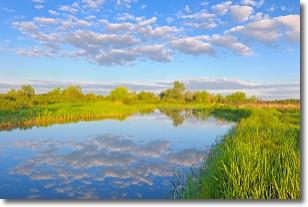Weather Alert in Texas
Flood Warning issued June 21 at 10:57PM CDT by NWS Shreveport LA
AREAS AFFECTED: Gregg, TX; Harrison, TX
DESCRIPTION: ...The Flood Warning is extended for the following rivers in Texas... Sabine River Near Gladewater affecting Upshur, Gregg and Smith Counties. Sabine River Near Hawkins affecting Upshur, Wood and Smith Counties. ...The Flood Warning continues for the following rivers in Texas... Sabine River At Longview affecting Gregg and Harrison Counties. Sabine River Near Mineola affecting Wood and Smith Counties. For the Sabine River...including Mineola, Hawkins, Gladewater, Longview, Beckville, Logansport...Minor flooding is forecast. * WHAT...Minor flooding is occurring and minor flooding is forecast. * WHERE...Sabine River at Longview. * WHEN...Until further notice. * IMPACTS...At 28.0 feet, Lowland flooding will continue for several days. Oil field operations will be curtailed and timber resources will suffer severe flooding. Fisherman should use caution as currents are swift. * ADDITIONAL DETAILS... - At 10:00 PM CDT Saturday the stage was 25.7 feet. - Recent Activity...The maximum river stage in the 24 hours ending at 10:00 PM CDT Saturday was 25.7 feet. - Forecast...The river is expected to rise to a crest of 27.0 feet Monday evening. - Flood stage is 25.0 feet. - Flood History...This crest compares to a previous crest of 27.2 feet on 01/22/1991. - http://www.weather.gov/safety/flood
INSTRUCTION: Do not drive cars through flooded areas. Caution is urged when walking near riverbanks. Turn around, don't drown when encountering flooded roads. Most flood deaths occur in vehicles. Motorists should not attempt to drive around barricades or drive cars through flooded areas. For more hydrologic information, copy and paste the following website address into your favorite web browser URL bar: https://water.noaa.gov/wfo/SHV The next statement will be issued Sunday evening at 1100 PM CDT.
Want more detail? Get the Complete 7 Day and Night Detailed Forecast!
Current U.S. National Radar--Current
The Current National Weather Radar is shown below with a UTC Time (subtract 5 hours from UTC to get Eastern Time).

National Weather Forecast--Current
The Current National Weather Forecast and National Weather Map are shown below.

National Weather Forecast for Tomorrow
Tomorrow National Weather Forecast and Tomorrow National Weather Map are show below.

North America Water Vapor (Moisture)
This map shows recent moisture content over North America. Bright and colored areas show high moisture (ie, clouds); brown indicates very little moisture present; black indicates no moisture.

Weather Topic: What is Sleet?
Home - Education - Precipitation - Sleet
 Next Topic: Snow
Next Topic: Snow
Sleet is a form of precipitation in which small ice pellets are the primary
components. These ice pellets are smaller and more translucent than hailstones,
and harder than graupel. Sleet is caused by specific atmospheric conditions and
therefore typically doesn't last for extended periods of time.
The condition which leads to sleet formation requires a warmer body of air to be
wedged in between two sub-freezing bodies of air. When snow falls through a warmer
layer of air it melts, and as it falls through the next sub-freezing body of air
it freezes again, forming ice pellets known as sleet. In some cases, water
droplets don't have time to freeze before reaching the surface and the result is
freezing rain.
Next Topic: Snow
Weather Topic: What are Stratocumulus Clouds?
Home - Education - Cloud Types - Stratocumulus Clouds
 Next Topic: Stratus Clouds
Next Topic: Stratus Clouds
Stratocumulus clouds are similar to altocumulus clouds in their
fluffy appearance, but have a slightly darker shade due to their additional mass.
A good way to distinguish the two cloud types is to hold your hand out and measure
the size of an individual cloud; if it is the size of your thumb it is generally
an altocumulus cloud, if it is the size of your hand it is generally a
stratocumulus cloud.
It is uncommon for stratocumulus clouds to produce precipitation, but if they do
it is usually a light rain or snow.
Next Topic: Stratus Clouds
Current conditions powered by WeatherAPI.com




